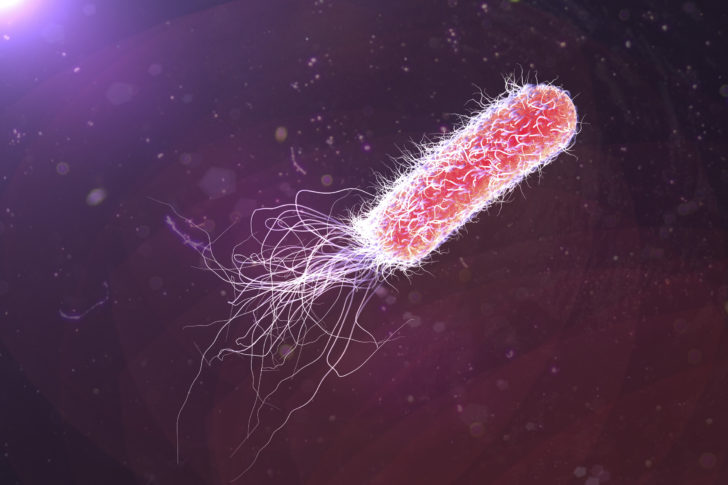Nano-silver against antibiotic resistance

Scientists from the Palacký University (UP) in Olomouc have discovered a unique mechanism that enables bacteria to defend themselves against silver nanoparticles, which are widely used in antibacterial therapy. This mechanism does not require the bacteria to undergo genetic changes, and differs significantly from mechanisms of antibiotic resistance. The scientists have also found a way to suppress bacterial resistance to nanosilver, which could be crucial in addressing the global antibiotics crisis. The revolutionary discovery was published in January on the cover page of the journal Nature Nanotechnology, arguably the world's most prestigious journal in the nanotechnology field. This is also the first paper published in this journal that was written exclusively by Czech authors.
The long-standing overuse of antibiotics during the second half of the last century has caused increasing levels of bacterial antibiotic resistance. Therefore, in recent years, many chemists, microbiologists, and physicians have studied the antibacterial effects of silver nanoparticles, which have gradually become incorporated into dozens of commercial products as well as successful options for local antibiotic therapy and preventing the evolution of bacterial infections. In 2006, scientists from the Palacký University in Olomouc described in detail the effectiveness of silver nanoparticles against a wide range of bacteria including highly resistant strains. This work, published in the American Chemical Society's Journal of Physical Chemistry B, attracted great scientific interest (it has received over 1200 citations) and prompted a flurry of work on nanosilver and its applications. However, scientists and physicians have been unable to determine whether repeated exposure to nanoparticles can cause bacteria to develop resistance similar to that seen with antibiotics. After approximately five years of work, this question has been answered by researchers from the Regional Centre of Advanced Technologies and Materials (RCPTM), the Centre of the Region Haná for Biotechnological and Agricultural Research, and the Faculty of Medicine of the Palacký University in Olomouc.
"It is well known that silver nanoparticles lose their antimicrobial activity if they come together to form larger particles known as aggregates. We have discovered that flagellar bacteria can exploit this Achilles' heel: upon repeated exposure to nanosilver, they start producing the protein flagellin from their flagella. This protein first reduces the repulsive forces between the nanoparticles and then acts like glue, causing the nanoparticles to stick to one-another and lose their antibacterial properties," said Aleš Panáček from RCPTM, the first author of the work, identifying it as a unique resistance mechanism.
Unlike antibiotic resistance, however, scientists have discovered a way to counter this problem. "Resistance can be easily overcome by adding substances that suppress the formation and release of flagellin. Suitable substances are found in pomegranate extracts, among other things. If such extracts are applied together with silver nanoparticles, the bacteria do not produce flagellin and therefore lose their resistance to silver nanoparticles," explained Libor Kvítek from RCPTM, who has pioneered nanosilver research at Olomouc.
The Czech scientists see the mechanism's discovery as a piece of good news at a time of widespread concern about a global antibiotics crisis. "Every year, hundreds of thousands of people die because antibiotics are losing their effectiveness against bacteria that have developed antibiotic resistance as a result of genetic changes. The surprising resistance mechanism that bacteria develop upon repeated exposure to silver nanoparticles simply proves that the oldest and most widespread organisms on our planet are continually acquiring new weapons in their ongoing struggle with scientists. However, it is important that this mechanism does not have a genetic basis and we can find ways to counter these weapons," said Milan Kolář, the head of the Department of Microbiology at the Medical Faculty of the Palacký University in Olomouc and a leading specialist in the study and treatment of bacterial infections.
According to the scientists, silver nanoparticles have a lot more to contribute in the fight against bacterial infections. The team from Olomouc has developed a technology protected by European and American patents that involves using strong chemical bonds to anchor silver nanoparticles to materials such as plastics, metals, and textiles. "This kind of antimicrobial surface treatment prevents the formation of bacterial films, and several companies in Europe have shown interest in its use. We think this is the way forward because the tight binding of silver nanoparticles prevents their aggregation, and hence the occurrence of flagellin-based bacterial resistance, while simultaneously preventing the nanoparticles from being released into the body or the environment," said Radek Zbořil, the director of RCPTM and a corresponding author of the work published in Nature Nanotechnology.
The scientists from Olomouc have reported several other important results in recent years, describing, among other things, the high activity of silver nanoparticles against yeasts and the possibility of restoring antibiotics' activity against multi-resistant bacteria while simultaneously applying nanosilver at very low concentrations that are non-toxic to mammalian cells.
Original article: https://www.ncbi.nlm.nih.gov/pubmed/29203912